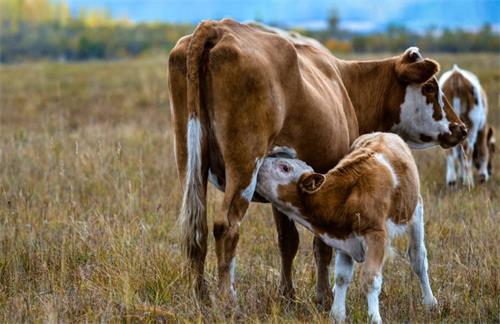Reproductive disorders in dairy cows are caused by the inability of dairy cows to estrus, conceive, or give birth on time. The main causes are endocrine abnormalities (disorders), ovarian and uterine diseases, etc. In addition, environmental factors are also one of the causes of reproductive disorders, such as poor feeding environment and abnormal climate change. Reproductive disorders in dairy cows increase the calving interval, reduce the number of calves, increase the number of matings and feeding costs, which leads to a decline in the economic benefits of dairy farming. In the process of dairy farming, it is necessary to frequently use cattle B-ultrasound to check dairy cows.

The main causes of reproductive disorders in dairy cows are abnormal estrus, no estrus (estrus), static estrus, estrus after pregnancy, male craving, irregular estrus cycle (short estrus, intermittent estrus). Among these reproductive diseases in dairy cows, it is critical to use cattle B-ultrasound to confirm the diagnosis.
Reproductive tract diseases are mainly endometritis and vaginitis. The causes of endometritis in dairy cows include retained placenta and bacterial invasion during uterine prolapse. When using cattle B-ultrasound examination, this type of disease can be judged more accurately. The sterilization of cow delivery and artificial insemination equipment is not strict, the pathogens of certain infectious and parasitic diseases invade the uterus, the cowshed is unclean, and feces and urine accumulate. Endometritis in dairy cows is usually divided into three categories, namely acute, chronic, and latent endometritis. The occurrence of acute endometritis is closely related to the retention of the placenta after delivery. The body temperature of sick cows rises. The appetite is reduced or abstained, rumination stops, and purulent secretions flow out of the vulva. Chronic endometritis is mostly transformed from acute, and the main manifestations are abnormal estrus, repeated infertility, or latent abortion. Such diseases can be diagnosed on cattle B-ultrasound. Sometimes turbid mucus with flocculent substances is discharged from the vagina. After latent endometritis occurs in dairy cows, the reproductive organs are generally normal and the estrus cycle is normal. However, it is often manifested as repeated infertility, and slightly turbid mucus only flows out of the vulva during estrus.
Application of B-ultrasound in cow examination:
1. B-ultrasound in cows monitors the uterus during the estrus cycle: The sonograms of the uterus during the estrus period and other periods of the sexual cycle are significantly different. During the estrus period, the boundary between the cervical endometrium and the cervical myometrium is obvious. Due to the thickening of the uterine wall and the increase in water content in the uterus, there are more low-echo dark areas on the sonogram, and the texture is uneven. The image of the uterine wall is brighter in late estrus and diestrus, and endometrial folds can be seen, but there is no liquid in the cavity.
2. B-ultrasound in cows monitors postpartum uterine involution: The uterine horns of primiparous cows are mostly fully involuted 40 days after delivery, and it takes about 50 days for multiparous cows. When the involution is close to completion, the boundary between the uterine myometrium and other tissues is obvious, the endometrium gradually thickens, and the image becomes white. It takes about 15 weeks for dogs to complete uterine involution.
3. Monitoring uterine diseases: B-ultrasound is more sensitive to endometritis, uterine pyometra, etc. Inflammation causes the uterine cavity to have unclear outlines, expand with partial echoes and snowflakes; in pus accumulation, the uterine body is enlarged, the uterine wall is clear, and there is a liquid dark area in the uterine cavity.
4. Observe embryonic development: Determine embryonic development by observing changes in the fetal extra-fetal and intra-fetal structures.
5. Monitor fetal life and death: Use ultrasound to detect fetal heartbeats to predict fetal life and death. Before embryonic death, the heartbeat decreases significantly. The disappearance of fetal movement, the dark area filled with liquid in the fetal sac, the inability to see the embryo, the disordered echoes in the uterus, and the inability to distinguish the fetal sac, placenta and fetal structure all indicate embryonic death.
6. Identify fetal sex: Use ultrasound to detect the positional relationship between the fetal reproductive tubercle and the surrounding structure to accurately identify the sex of the fetus. At 50 to 105 days after mating, the accuracy rate of identifying the sex of the fetus is 96%.
7. Estimation of the number of fetuses and prediction of fetal age: Estimation of the number of fetuses is mainly used for animals with multiple fetuses. B-ultrasound can also be used to highly accurately determine the size of the fetus in cattle, and the calving date can be predicted based on the size of the fetus. The diameter of the gestational sac can be used to roughly estimate the gestational age. There are also methods that use the diameter of the chorionic cyst cavity and the diameter of the uterus to determine the gestational age.








